Mysteries of the Osage Orange Tree
What is an Osage Orange tree?
We have a somewhat random product for sale! It’s Osage Orange trees! Read on to discover some of the mysteries of this unique tree. So exactly what is this tree like?
Well I had to do a little research on the matter, as it turns out this tree is not the kind of tree you would typically see at your local nursery! (Although we are totally trying to be a part of the comeback of this interesting tree!)
The typical Osage Orange tree adapts well to most soil conditions and grows rapidly. At about 7 years of age is 8 feet tall and spreads about 6 feet around. They are known for being able to be trained into a wildlife friendly natural hedge when planting in a row. The effective spiny barrier of an Osage orange hedge is considered “horse-high, bull-strong, and pig-tight,”.
In hedges, the tree usually grows no more than 20 feet high, but out in the open, it may grow much higher. The national champion Osage orange tree, a 350- to 400-year-old beauty in Red Hill, Va. It’s 54 feet high with a crown of 90 feet! Yikes!
History of the Osage Orange
The Osage orange is named for the Osage Indians that lived in the tree’s native range and for the scent of its fruit. It’s a member of the mulberry family. There are records of Lewis and Clark sending Osage slips to Thomas Jefferson.
The Wood of the Osage Orange Tree
The Osage Orange tree is known for its strong, flexible wood that takes on a nice finish when polished. It used to be used to make tools, fence posts, ship masts and bow & arrows. The Osage wood is known to burn at a very high temperature, so high it can even damage wood stoves.
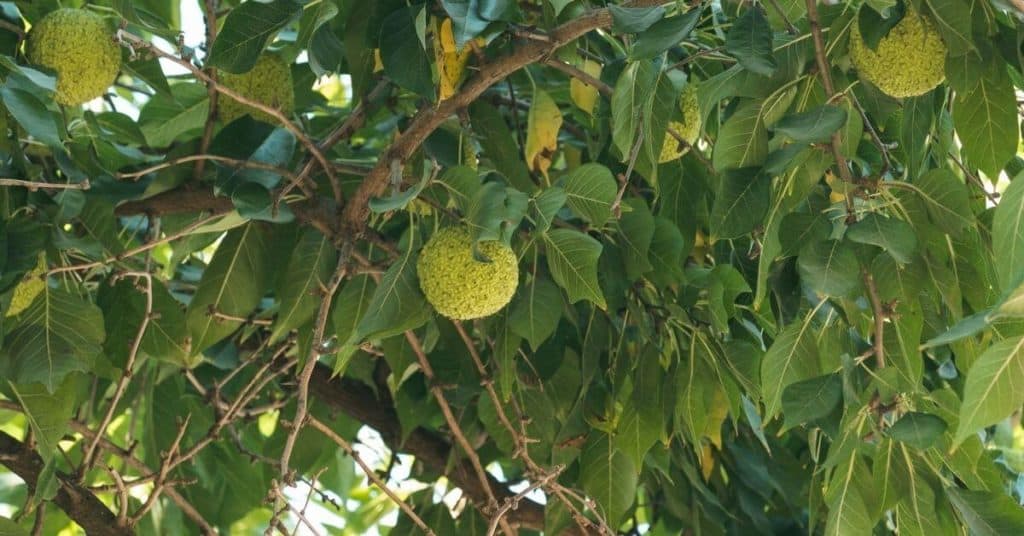
Its wood is also extremely dense which explains how it supports several 3-5” 2-pound fruits!
The Fruit of the Osage Orange Tree- Monkey Balls!
From around September – December the female Osage Orange trees will produce strange fruit that looks like round green brains. The fruit is sometimes called hedge apples, monkey balls, bowwood, bois d’arc (French for “wood of the bow”), bodark, geelhout, mock orange, horse apple, naranjo chino, wild orange and yellow-wood. It’s not edible, by humans anyway, but squirrels seem to enjoy eating the seeds and horses have been known to eat them.

Inedible?! What’s the Fruit Good For?
The monkey balls, as I will call the little brain looking fruit from here on out because it’s my favorite common name, are known for their ability to ward off undesired insects. This fact is not scientifically proven of course, but from what I read it’s widely known that the fruit and the wood of the Osage orange tree contains tetrahydroxystilbene, an anti-fungicide that may deter insects. Who knew?
Placement of hedge apples around the foundation or inside the basement is claimed to provide relief from cockroaches, spiders, boxelder bugs, crickets, and other pests. They certainly are interesting little balls to add to a Fall display for the “ugly cool” look, and hey, if they repel insects – win-win!
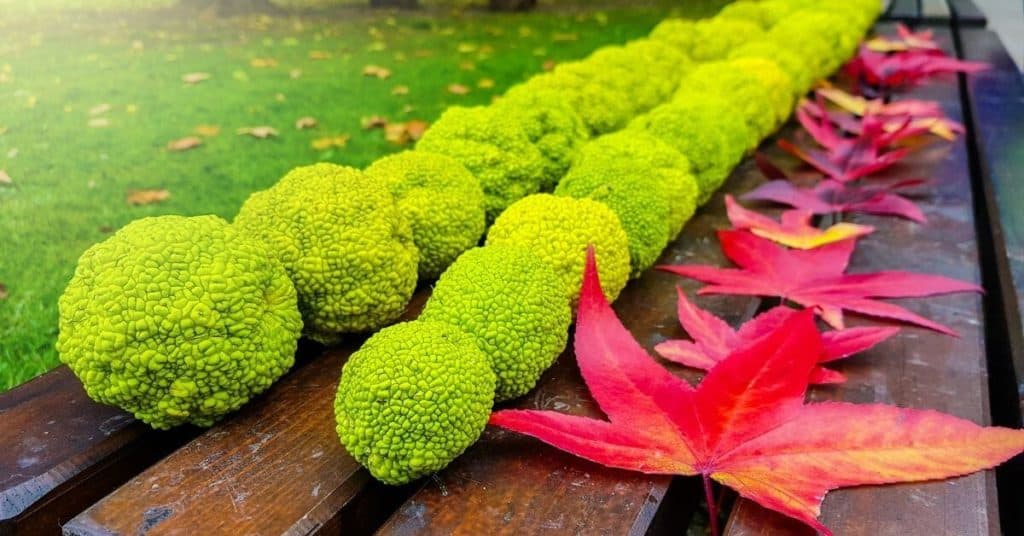
The only other use for monkey balls that I can think of, being the mom of 3 boys and a softball playing girl, is a ball/weapon of course. Monkey balls are hard! I would not want to hit with one of these green brainy balls!
But has anyone eaten an Osage Orange?
I found this hilarious clip on YouTube below of this “Weird Explorer” that goes around and tries crazy fruits. Warning, this may only be hilarious to me because I have an osage orange plantation growing in the yard.
It’s a nearly 19-minute clip, and this is a strange video, so I’ll give you the highlights if you’re short on time. At about 4 minutes in he tests the insect repellant claim by holding a slice up to a spider and asking, “Does this bother you?”. Then at 6 minutes in he tastes a very small slice of the fruit and concludes, “This is not the worst thing that I’ve had. Ok it’s not bad. It’s just not good. If you’re curious what the osage orange tastes like, it tastes a little bit like watermelon rind of all things.”
He goes on to show how sticky the milky substance from the fruit is by sticking his hands to each other and some paper. He lost me about 8 minutes into the video when he was getting the seeds out of the fruit by laboriously crushing the fruit, because I happen to know that if you let the fruit ripen it will get mushy and the seeds are far more easily removed with a little patient, searching through the mush.
I know this because I owe this whole acquisition of trees to my 4-yr old visiting a friend’s property and collecting the interesting little monkey balls and leaving them in our garage where they started to rot. My curious husband, wondering if they would grow, threw them in a pot thinking not all the seeds would propagate, and lo and behold they all did. And that is why we have 100 Osage Orange saplings in our backyard!
But the good news is this a miracle fruit proven to cure cancer!
So there you have it, my research on the Osage Orange tree along with the offer for you to plant some in your very own yard.
-

 Osage Orange Saplings$15.00
Osage Orange Saplings$15.00
Articles that helped me research the mysteries of the Osage Orange Tree:
- https://hortnews.extension.iastate.edu/1997/10-10-1997/hedgeapple.html
- http://mitchfincher.blogspot.com/2015/10/8-amazing-facts-about-osage-orange-tree.html
- http://www.lewis-clark.org/article/2521
To learn more about our hobby farm poke around the site a bit, you may leave wanting to summon your inner farmer! Or inner crafter!

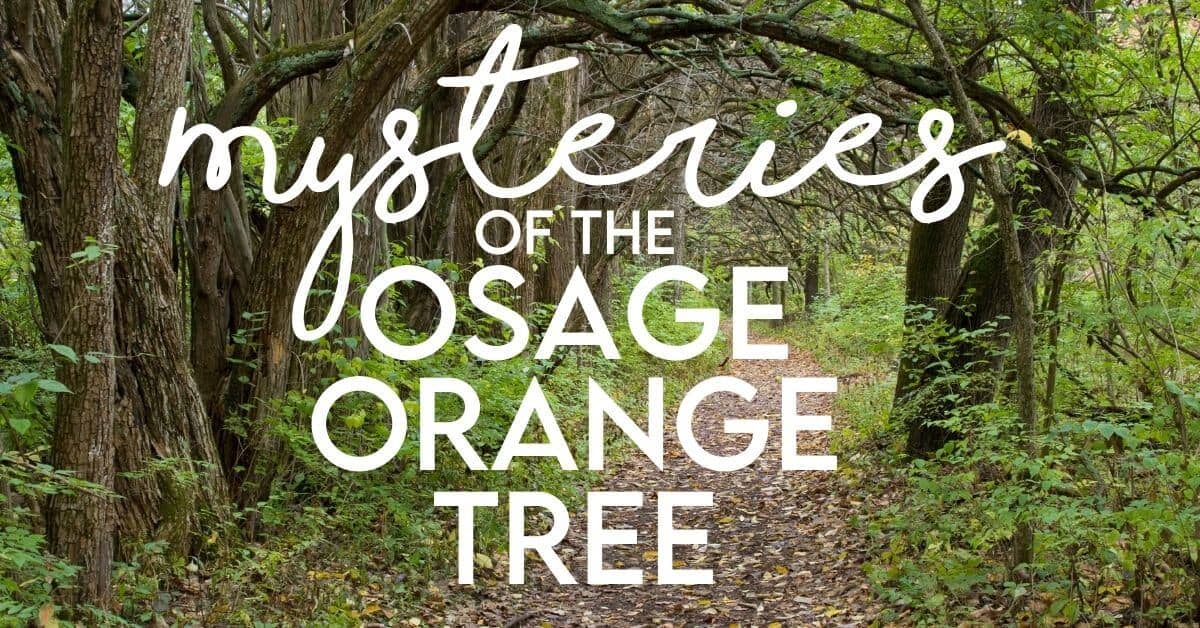
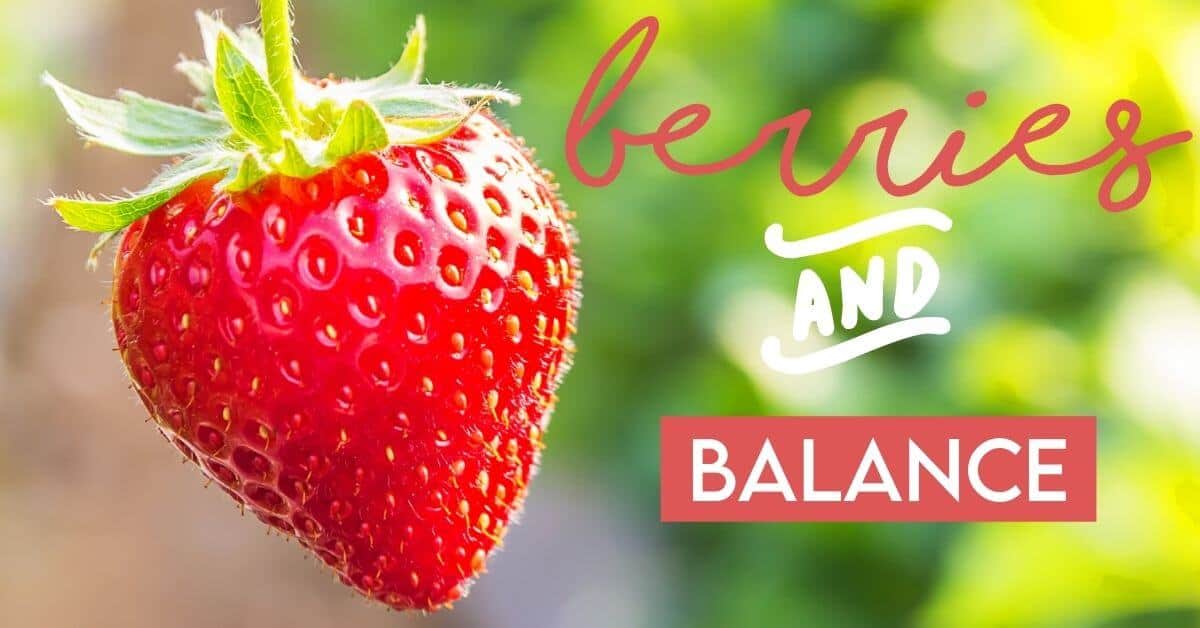
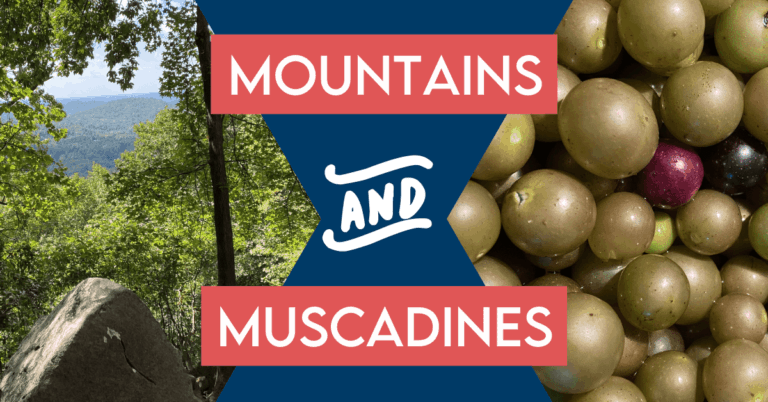




I have one that i grew from a monkey ball 25 ft tall n 15 yrs old,collected m balls from tree growing in Sumter National forest, how can u tell female plants.” Big Orange”needs a mate to pollinate? I live in Fountain Inn. Lets communicate Happy Thanksgiving
Happy Thanksgiving! Yes, the female osage orange will need male in order to wind pollinate. We have some trees for sale, but unfortunately we don’t know if they are male or female. I don’t claim to be an expert, but everything I have read says you don’t know the gender until 10 years. You’re welcome to come take a look.